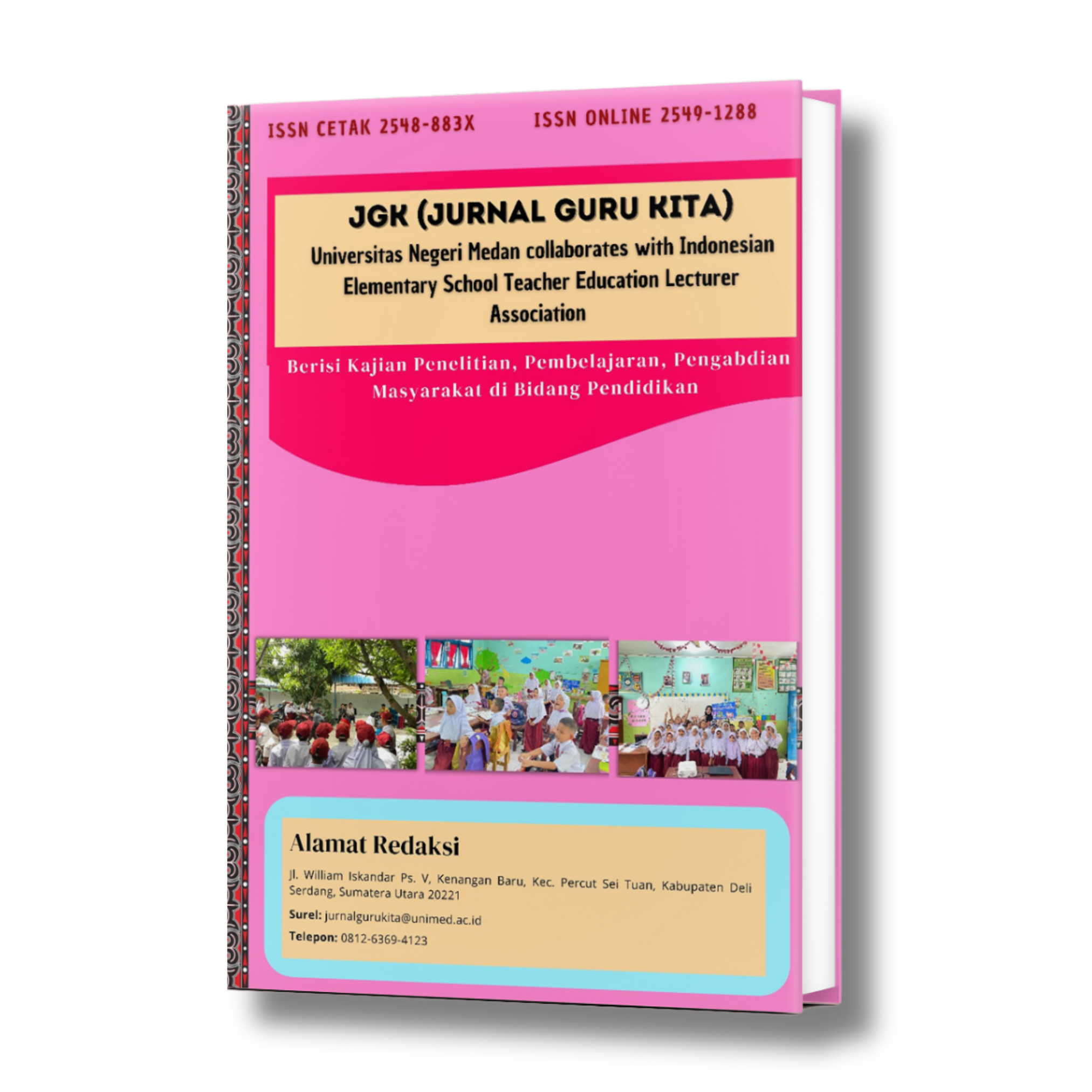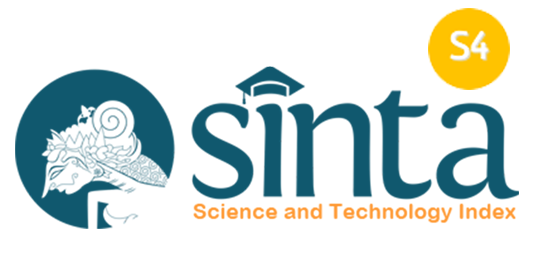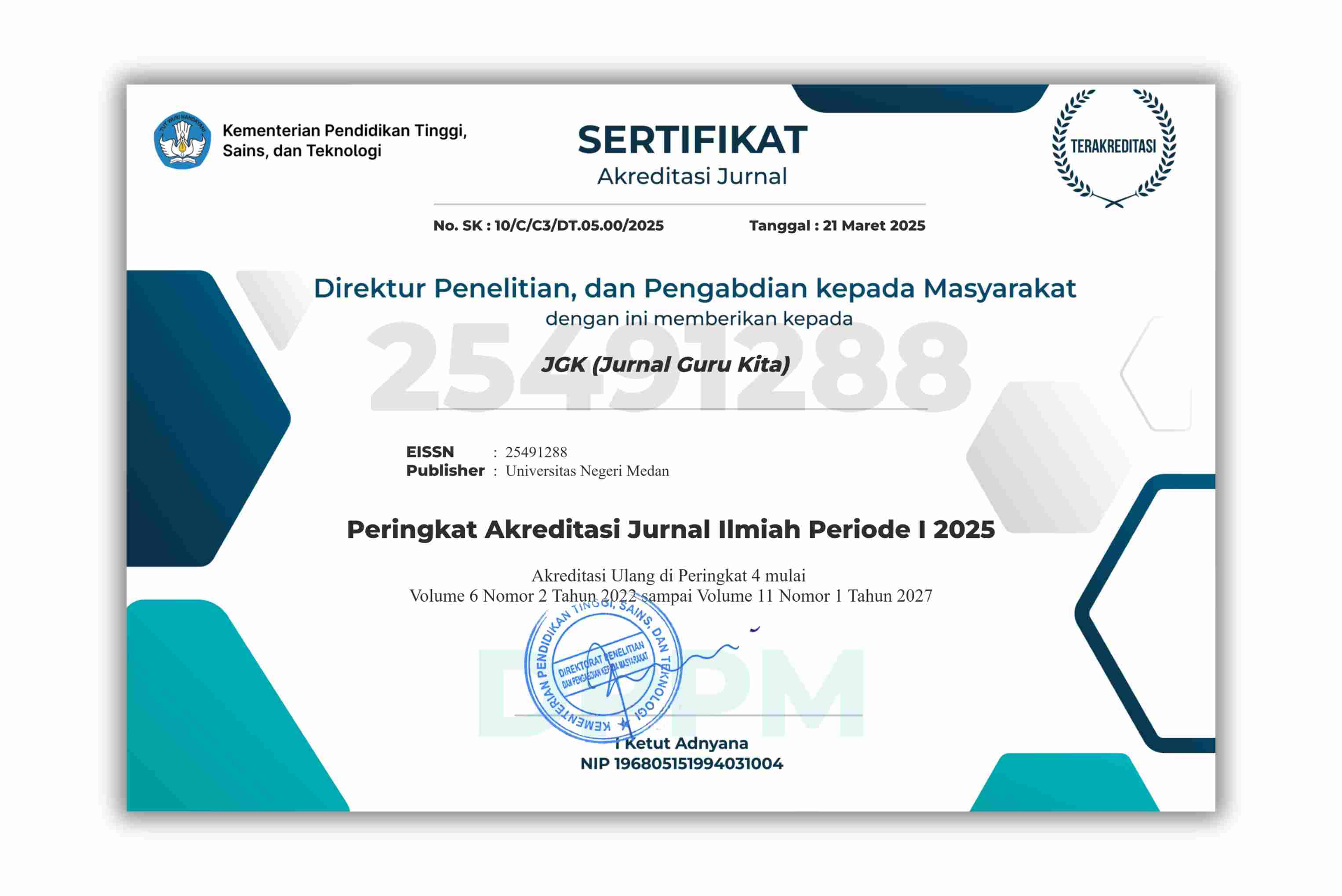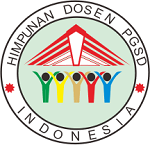Pengaruh Penggunaan Gadget Terhadap Prestasi Belajar Siswa Moderasi Kualitas Tidur
DOI:
https://doi.org/10.24114/jgk.v9i4.66008Keywords:
Penggunaan Gadget, Prestasi Belajar, Kualitas Tidur, Siswa SMAAbstract
Penelitian ini bertujuan untuk menganalisis pengaruh penggunaan gadget terhadap prestasi belajar siswa SMA Negeri 1 Kamal dengan kualitas tidur sebagai variabel moderasi. Metode yang digunakan adalah kuantitatif dengan analisis regresi moderasi. Hasil penelitian menunjukkan bahwa penggunaan gadget berpengaruh signifikan terhadap prestasi belajar siswa (t hitung = 2.361, p = 0.022). Namun, kualitas tidur tidak berperan sebagai variabel moderasi dalam hubungan tersebut (t hitung = 1.947, p = 0.057). Temuan ini mengindikasikan bahwa faktor lain, seperti pola belajar dan tingkat stres, mungkin lebih berpengaruh terhadap prestasi akademik siswa. Oleh karena itu, diperlukan keseimbangan dalam penggunaan gadget agar siswa tetap dapat mencapai hasil belajar yang optimal.References
Abdull Mutalib, A. A., Md. Akim, A., & Jaafar, M. H. (2022). A systematic review of health sciences students’ online learning during the COVID-19 pandemic. BMC Medical Education, 22(1), 524. https://doi.org/10.1186/s12909-022-03579-1
Acikgoz, A., Acikgoz, B., & Acikgoz, O. (2022). The effect of internet addiction and smartphone addiction on sleep quality among Turkish adolescents. PeerJ, 10, e12876. https://doi.org/10.7717/peerj.12876
Akhtar, F., Patel, P. K., Heyat, M. B. Bin, Yousaf, S., Baig, A. A., Mohona, R. A., Mutoffar, M. M., Bhattacharya, T., Teelhawod, B. N., Li, J. P., Kamal, M. A., & Wu, K. (2023). Smartphone Addiction among Students and its Harmful Effects on Mental Health, Oxidative Stress, and Neurodegeneration towards Future Modulation of Anti-Addiction Therapies: A Comprehensive Survey based on SLR, Research Questions, and Network Visualization. CNS & Neurological Disorders - Drug Targets, 22(7), 1070–1089. https://doi.org/10.2174/1871527321666220614121439
Akhtar, M. M., Rizvi, D. R., Ahad, M. A., Kanhere, S. S., Amjad, M., & Coviello, G. (2021). Efficient Data Communication Using Distributed Ledger Technology and IOTA-Enabled Internet of Things for a Future Machine-to-Machine Economy. Sensors, 21(13), 4354. https://doi.org/10.3390/s21134354
Arikunto. (2017). Pengembangan Instrumen Penelitian dan Penilaian Program. Pustaka Belajar.
Buckler, S., & Moore, H. (2023). Essentials of research methods in education.
Cahyani, A., Atmaja, K., & Widodo. (2021). The Role of Parents in Monitoring the Negative Impacts of Gadget Usage for Early Childhood during Covid-19 Pandemic Era. https://doi.org/10.2991/assehr.k.211223.194
Chemnad, K., Aziz, M., Belhaouari, S. B., & Ali, R. (2023). The interplay between social media use and problematic internet usage: Four behavioral patterns. Heliyon, 9(5), e15745. https://doi.org/10.1016/j.heliyon.2023.e15745
Christensen, I.-M. F., Markauskaite, L., Dohn, N. B., Ripley, D., & Hachmann, R. (2024). Creating Design Knowledge in Educational Innovation: Theory, Methods, and Practice. Taylor & Francis.
de Sá, S., Baião, A., Marques, H., Marques, M. do C., Reis, M. J., Dias, S., & Catarino, M. (2023). The Influence of Smartphones on Adolescent Sleep: A Systematic Literature Review. Nursing Reports, 13(2), 612–621. https://doi.org/10.3390/nursrep13020054
Doncaster, C. P., & Bullock, J. M. (2024). Living in harmony with nature is achievable only as a non-ideal vision. Environmental Science & Policy, 152, 103658. https://doi.org/10.1016/j.envsci.2023.103658
Fafunwa, A. B., & Aisiku, J. U. (2022). Education in Africa. Routledge. https://doi.org/10.4324/9781003316114
Hammad, M. A., Alyami, M. H. F., & Awed, H. S. (2024). The association between internet addiction and sleep quality among medical students in Saudi Arabia. Annals of Medicine, 56(1). https://doi.org/10.1080/07853890.2024.2307502
Hartstein, L. E., Mathew, G. M., Reichenberger, D. A., Rodriguez, I., Allen, N., Chang, A.-M., Chaput, J.-P., Christakis, D. A., Garrison, M., Gooley, J. J., Koos, J. A., Van Den Bulck, J., Woods, H., Zeitzer, J. M., Dzierzewski, J. M., & Hale, L. (2024). The impact of screen use on sleep health across the lifespan: A National Sleep Foundation consensus statement. Sleep Health, 10(4), 373–384. https://doi.org/10.1016/j.sleh.2024.05.001
Jakobsson, M., Josefsson, K., & Högberg, K. (2024). Adolescents’ Suggestions on how to Support Their Sleep: A Focus Group Study. The Journal of School Nursing, 40(3), 275–284. https://doi.org/10.1177/10598405221084317
Koutsopoulos, K. C., Doukas, K., & Kotsanis, Y. (2017). Handbook of research on educational design and cloud computing in modern classroom settings. IGI Global.
Lampropoulos, G., & Kinshuk. (2024). Virtual reality and gamification in education: a systematic review. Educational Technology Research and Development, 72(3), 1691–1785. https://doi.org/10.1007/s11423-024-10351-3
Li, L. (2023). Revisiting ‘blackboard’: Transformation of medium, space and pedagogy in school education. Educational Philosophy and Theory, 55(7), 773–786. https://doi.org/10.1080/00131857.2022.2138336
Liu, J., Ji, X., Pitt, S., Wang, G., Rovit, E., Lipman, T., & Jiang, F. (2024). Childhood sleep: physical, cognitive, and behavioral consequences and implications. World Journal of Pediatrics, 20(2), 122–132. https://doi.org/10.1007/s12519-022-00647-w
Malarvizhi, C. A., Al Mamun, A., Jayashree, S., Naznen, F., & Abir, T. (2022). Modelling the significance of social media marketing activities, brand equity and loyalty to predict consumers’ willingness to pay premium price for portable tech gadgets. Heliyon, 8(8), e10145. https://doi.org/10.1016/j.heliyon.2022.e10145
Markus, K. A., & Borsboom, D. (2024). Frontiers of Test Validity Theory. Routledge. https://doi.org/10.4324/9781003398219
Mishra, R. (2023). An overview of backbone technology behind the latest advanced gadgets in use: 4G & 5G. Spatial Information Research, 31(1), 15–26. https://doi.org/10.1007/s41324-022-00474-1
Mukherjee, S., Gupta, S., Rawlley, O., & Jain, S. (2022). Leveraging big data analytics in 5G‐enabled IoT and industrial IoT for the development of sustainable smart cities. Transactions on Emerging Telecommunications Technologies, 33(12). https://doi.org/10.1002/ett.4618
Owan, V. J., Abang, K. B., Idika, D. O., Etta, E. O., & Bassey, B. A. (2023). Exploring the potential of artificial intelligence tools in educational measurement and assessment. Eurasia Journal of Mathematics, Science and Technology Education, 19(8), em2307. https://doi.org/10.29333/ejmste/13428
Raoof, K., Shokri, O., Fathabadi, J., & Panaghi, L. (2024). Unpacking the underachievement of gifted students: A systematic review of internal and external factors. Heliyon, 10(17), e36908. https://doi.org/10.1016/j.heliyon.2024.e36908
Saikia, R. (2025). Horizon: Methods & Society 2025. Research Beacon Publication.
Salunke, S., & Kumar, M. (2025). Research Trends in Multidisciplinary Research (Volume-1). AG Volumes, 1–103.
Saputra, M. R. A., Chalid, F. I., & Budianto, H. (2023). Metode Ilmiah dan Penelitian: Kuantitatif, Kualitatif, dan Kepustakaan (Bahan Ajar Madrasah Riset). Nizamia Learning Center.
Sayed, M., Naiim, C. M., Aboelsaad, M., & Ibrahim, M. K. (2022). Internet addiction and relationships with depression, anxiety, stress and academic performance among Egypt pharmacy students: a cross-sectional designed study. BMC Public Health, 22(1), 1826. https://doi.org/10.1186/s12889-022-14140-6
Sharon, O., Ben Simon, E., Shah, V. D., Desel, T., & Walker, M. P. (2024). The new science of sleep: From cells to large-scale societies. PLOS Biology, 22(7), e3002684. https://doi.org/10.1371/journal.pbio.3002684
Shoufan, A., & Mohamed, F. (2022). YouTube and Education: A Scoping Review. IEEE Access, 10, 125576–125599. https://doi.org/10.1109/ACCESS.2022.3225419
Sugiyono, S. (2013). Metode penelitian pendidikan pendekatan kuantitatif, kualitatif, dan R&D. Alfabeta.
Sugiyono, S. (2016). Metode penelitian pendidikan : pendekatan kuantitatif, kualitatif, dan R&D. CV. Alfabeta.
Sugiyono, S. (2019). Metode Penelitian Pendidikan (Kuantitatif, Kualitatif, Kombinasi, R&D dan Penelitian Pendidikan). CV. Alfabeta.
Sugiyono, S. (2022). Metode Penelitian Kuantitatif, Kualitatif Dan R&D. Alfabeta.
Sulistiyo, U. (2023). Metode penelitian kualitatif. PT Salim Media Indonesia.
Throne, R. (2024). Qualitative research methods for dissertation research. IGI Global.
Vadivel, B., Alam, S., Nikpoo, I., & Ajanil, B. (2023). The Impact of Low Socioeconomic Background on a Child’s Educational Achievements. Education Research International, 2023, 1–11. https://doi.org/10.1155/2023/6565088
Villena-Taranilla, R., Tirado-Olivares, S., Cózar-Gutiérrez, R., & González-Calero, J. A. (2022). Effects of virtual reality on learning outcomes in K-6 education: A meta-analysis. Educational Research Review, 35, 100434. https://doi.org/10.1016/j.edurev.2022.100434
Wacks, Y., & Weinstein, A. M. (2021). Excessive Smartphone Use Is Associated With Health Problems in Adolescents and Young Adults. Frontiers in Psychiatry, 12. https://doi.org/10.3389/fpsyt.2021.669042
Wang, Y., Zuo, M., He, X., & Wang, Z. (2025). Exploring Students Online Learning Behavioral Engagement in University: Factors, Academic Performance and Their Relationship. Behavioral Sciences, 15(1), 78. https://doi.org/10.3390/bs15010078
Xu, Y., Liu, X., Cao, X., Huang, C., Liu, E., Qian, S., Liu, X., Wu, Y., Dong, F., Qiu, C.-W., Qiu, J., Hua, K., Su, W., Wu, J., Xu, H., Han, Y., Fu, C., Yin, Z., Liu, M., … Zhang, J. (2021). Artificial intelligence: A powerful paradigm for scientific research. The Innovation, 2(4), 100179. https://doi.org/10.1016/j.xinn.2021.100179
Zain, Z. M., Jasmani, F. N. N., Haris, N. H., & Nurudin, S. M. (2022). Gadgets and Their Impact on Child Development. International Academic Symposium of Social Science 2022, 6. https://doi.org/10.3390/proceedings2022082006
Zarhin, D. (2024). How and Why People Use Mobile Phones Near Bedtime and in Bed: Israelis’ Narratives of Digitally Enabled Sleepful Sociality. Sociology, 58(1), 83–99. https://doi.org/10.1177/00380385231157560
Downloads
Published
How to Cite
Issue
Section
License
Copyright (c) 2025 Komaria Komaria, Yusrianto Sholeh

This work is licensed under a Creative Commons Attribution-ShareAlike 4.0 International License.
Authors published with the JGK (Jurnal Guru Kita) agree to the following terms:
- Authors retain copyright and grant the journal the right of first publication with the work simultaneously licensed under a Creative Commons Attribution License (CC BY-SA 4.0) that allows others to share the work with an acknowledgment of the work's authorship and initial publication in this journal.
- Authors are able to enter into separate, additional contractual arrangements for the non-exclusive distribution of the journal's published version of the work (e.g., post it to an institutional repository or publish it in a book), with an acknowledgment of its initial publication in this journal.
- Authors are permitted and encouraged to post their work online (e.g., in institutional repositories or on their website) prior to and during the submission process, as it can lead to productive exchanges, as well as earlier and greater citation of published work. (See The Effect of Open Access)

























